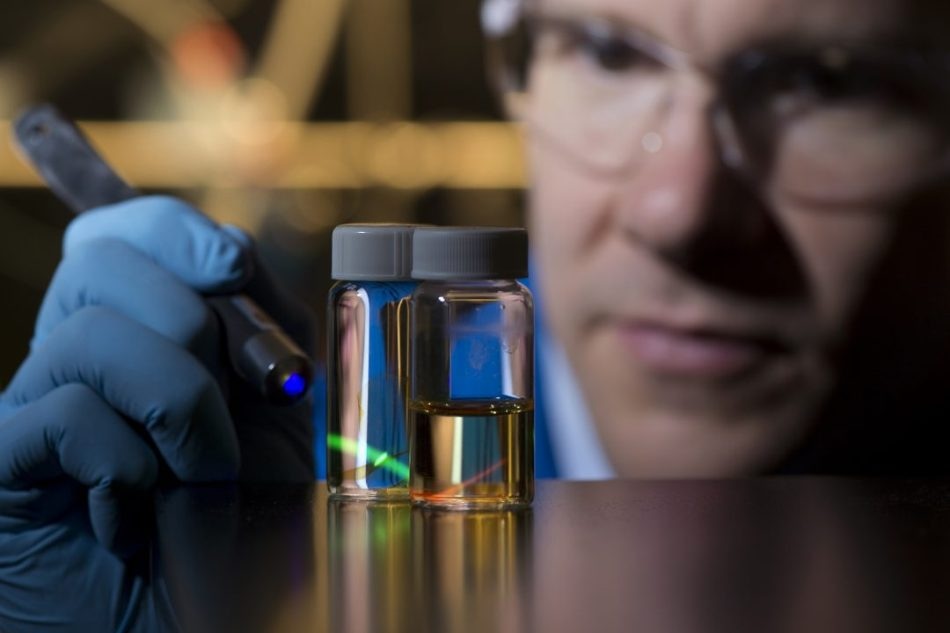Nov 17 2017
Chemists at the University of California, Irvine have created a new type of solar power generator by binding photosensitive dyes to standard plastic membranes and adding water. The device is like well-known silicon photovoltaic cells but varies in a fundamental way: Instead of being created via electrons, its electricity arises from the motion of ions.
 Our results represent considerable progress toward a device that directly converts sunlight into ionic electricity, which has implications for direct desalination of seawater," says Shane Ardo, UCI assistant professor of chemistry, as well as chemical engineering & materials science. (Steve Zylius / UCI)
Our results represent considerable progress toward a device that directly converts sunlight into ionic electricity, which has implications for direct desalination of seawater," says Shane Ardo, UCI assistant professor of chemistry, as well as chemical engineering & materials science. (Steve Zylius / UCI)
Nicknamed the “synthetic, light-driven proton pump” by its makers, the innovation – because of its ionic basis – has the added possible capability of drawing the salt out of seawater.
“The materials used to make such a device can be dirt-cheap,” said Shane Ardo, UCI assistant professor of chemistry, as well as chemical engineering & materials science, and senior author of a paper describing the generator published today in the Cell Press journal Joule.
We’re talking about common polyethylene plastic, light-absorbing dye molecules and water.
Shane Ardo, Assistant Professor of Chemistry, UCI
In Ardo’s laboratory, the researchers developed a system involving on dual layers of dye-coated, ion-transporting membranes. When hit with light from a laser pointer – a laboratory simulation of sunlight – the dye discharges ions. Positively charged protons, also called cations, pass through one sheet, while negatively charged hydroxides, also known as anions, pass through the other. These photoactive membranes produce 60 millivolts, on average, sometimes going up to more than 100 millivolts, as measured by Ardo’s team.
Our results represent considerable progress toward a device that directly converts sunlight into ionic electricity, which has implications for direct desalination of seawater.
Shane Ardo, Assistant Professor of Chemistry, UCI
When presenting in public about this research, he frequently holds up a regular plastic water bottle and asks, “What if it were possible to dip this container in the ocean, let it sit in full sun for about an hour and then be able to drink the water? The prospect of that is revolutionary.”
According to Lead Author William White, a graduate student in Ardo’s lab, researchers have been attempting to develop an ion-exchange power generator for years with partial success.
There had been other experiments dating back to the 1980s that photo-excited materials so as to pass an ionic current through them. Theoretical studies said that those currents should be able to reach the same levels as their electronic analogs, but none of them worked all that well.
William White, Lead Author
The researchers see other probable applications for the technology, including as part of a brain-computer interface system. Aqueous environments and silicon-based devices do not mix, but the flexible, fluid-permeable structures being created in the Ardo lab may in the future offer a way of incorporating living tissue and artificial circuitry.
This research received support from UCI’s School of Physical Sciences and the Gordon and Betty Moore Foundation.